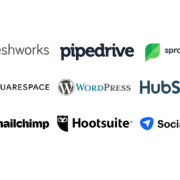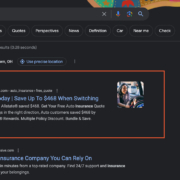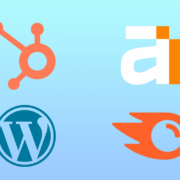Breaking Down A Digital Marketing Strategy
You’ve heard the saying “consistency is key,” and it’s a large component of a digital marketing strategy. From posting on social media channels to the tone of your brand, consistency is what helps achieve business goals.
What’s a digital marketing strategy, exactly? It’s the way ideas are organized to establish an internet presence or to create brand awareness. Digital marketing channels are used to advertise a brand, including social media, search engine optimization (SEO), podcasts, Google ads and anything else digital. Think of a digital marketing strategy as a series of goals to help you accomplish a large goal. Ultimately, it’s a way to reach new customers through digital channels.
We know, we know. It sounds like a lot, but don’t worry. We’re going to review different online strategies that make up a digital marketing strategy.
Why Do You Need A Game Plan?
Think back to your school days. How much easier were tests and quizzes when you studied and researched? It’s a similar process to a digital marketing plan. It’s simple: a plan will help you stay organized and make it easier to manage your marketing tools and digital marketing campaigns. The campaign will be planned-out actions that make up your digital marketing strategy.
Before a digital marketing plan, you have to understand a bit about your target market. What’s the demographic you’re trying to reach? As you research, create buyer personas to represent your target audience. This will help you decide where your digital strategy should be: social media platforms or somewhere else in the digital world.
Different Digital Marketing Tactics
Now your research has started and you have an understanding of the potential customers you’d like to target, look at different digital marketing tactics. These are the different ways you take to reach your target audience.
- SEO – Search engine optimization is when your website populates higher on a search engine results page (SERP). This is organic and done through inbound and outbound links, keywords, internal links and different types of tags throughout your content.
- Social media marketing – Also known as SMM, social media is used as a way to market a brand through interaction and promotion.
- Influencer marketing – Influencers promote a brand to their followers for money or free products.
- Email marketing – Emails are sent to a roster of customers, announcing new products, discounts or coupons and other perks. There’s usually a call to action (CTA), like “click here to buy.”
- PPC – Pay per click is when advertisers pay a fee each time an ad is clicked.
- Podcasts – Similar to a radio talk show, a podcast is oftentimes educational and geared toward a specific target audience. This is becoming a popular way to increase return on investment (ROI).
Learning About KPIs
Between algorithms and varying web traffic, key performance indicators (KPIs) can be analyzed. While there are a host of KPIs to follow that will help gauge the marketing efforts of a digital marketing strategy, a handful will help with guiding the way to stronger brand awareness. Google Analytics is a great way to track these metrics.
Different Types Of Website Traffic
-
- How many visitors are stopping by your site?
- What’s the amount of new visitors versus returning?
- How long are people staying on your website, and which is the most-visited page on your site?
- Conversion rate – This is a percentage of how many people followed your call to action, divided by the total of ad interactions in a specified window of time.
- Lead generation – These are ways to obtain data on potential customers, whether through coupons, job applications or blogs.
Studying Your Target Audience
Market segmentation is breaking a target audience into small groups so it’s easier to obtain information. Popular ways people are grouped include location, demographics and interests. Creating smaller groups allows for digital marketing strategies to be realigned. By retargeting your branding efforts, your target audience will feel more represented. Looking at smaller groups helps gain an understanding of customers’ needs and expectations.
By knowing your target audience, you can concisely explain your brand. Think of challenges a teenager has when explaining technology to their grandparents. Now think of the confusion if you don’t research who your target audience is — it’s difficult to communicate if you aren’t sure how to.
Creating sub-audiences also helps stay in tune with what your competitors are doing. If they have a similar target audience, study how they reach their audience. This is an opportunity to set your tone apart from others in your industry.
Lean On Us For Content Marketing
Starting a new business is stressful enough; adding marketing goals into the mix can take it to a new level. Lift Marketing will not only guide you through marketing activities but use data to ensure an ideal customer experience. Lift Marketing is a digital marketing agency that can help small businesses grow their digital advertising. Through our Google partnership and collective know-how of online marketing, our marketing team stays up-to-date on marketing trends.
Contact us today to begin a partnership so we can help build your digital marketing strategy.













